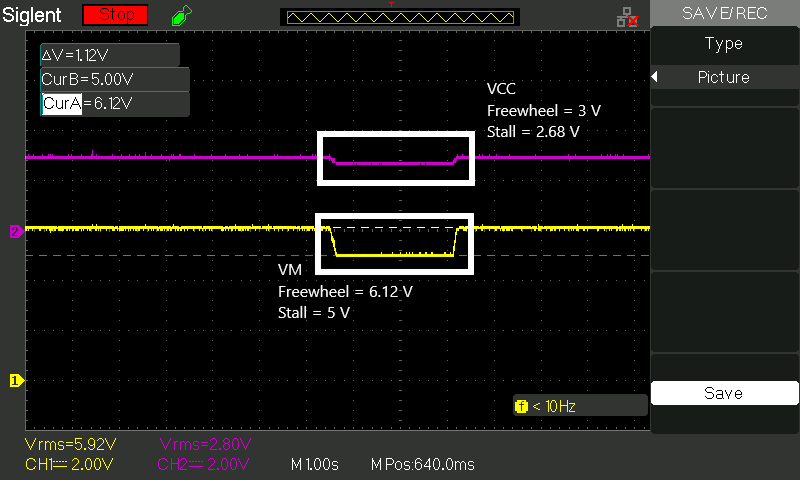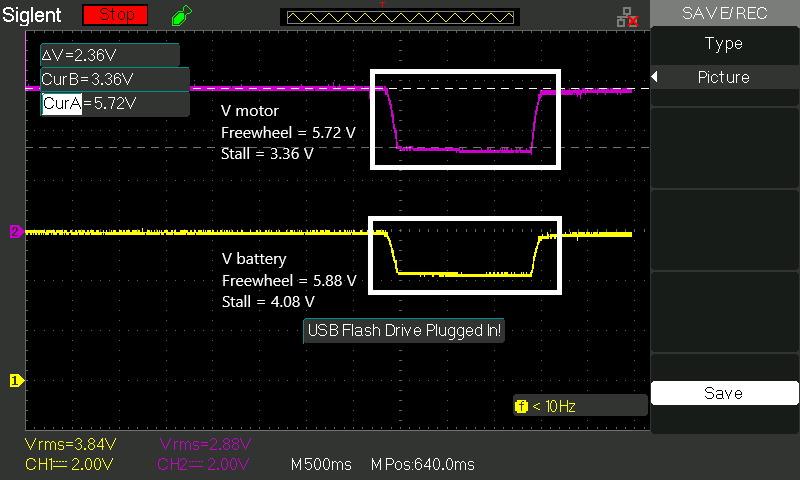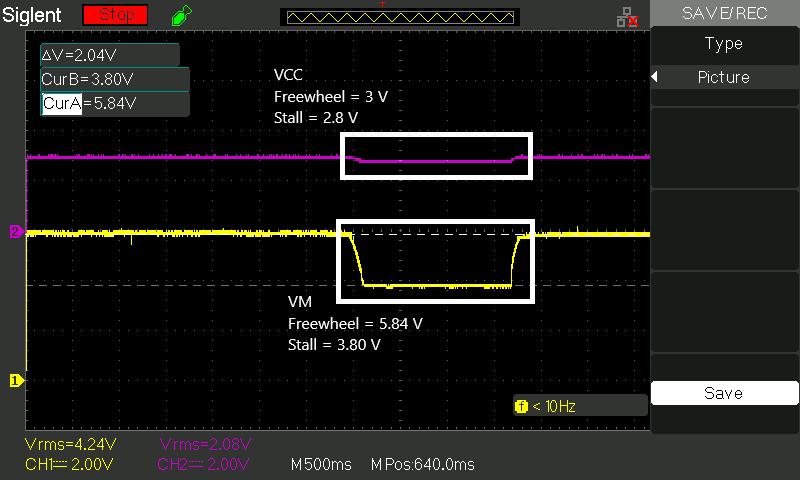Other Parts Discussed in Thread: CSD25310Q2
Hello,
I want to ask about the max current that is drawn from my system using DRV8837. From the related question that previously has been verified I think a new topic is more suitable so the discussion can be focus.
From my previous related question, I tested my system at stall and the drop voltage on the driver (Rds) is quite high.
As a summary, I use a motor with rated voltage of 3.5 V and the stall current at 3.87 A.
- If I drive the driver with 6.0 V then stall the motor, the stall current provided by driver is about 1.7 A
- If I drive the driver with 3.5 V then stall the motor, the stall current provided by driver is about 1.2 A
I'm confused with this not so ideal result. The datasheet for DRV8837 states that the amount of local capacitance needed depends on a variety of factors such as the highest current required by the motor system.
So my question is:
- Based on the experiment, even at 3.5V I can't maximize the DRV8837 to at least close to its max current 1.8 A. I thought that should not be so low, probably around 1.5A.
Does this has anything to do with the bulk capacitance? In other words, does the local bulk capacitance can determine the max continuous current that can be delivered by the driver?
As a note, I check the schematic and the driver block only has 0.1uF capacitor on its VM pin. There is a 10uF capacitor however that is on the input of the system that feeds to buck converter input. The input (+) side is parallel to VM on DRV8837 and VIN on buck converter (intended for battery positive terminal).
Kind regards,
Pranata






